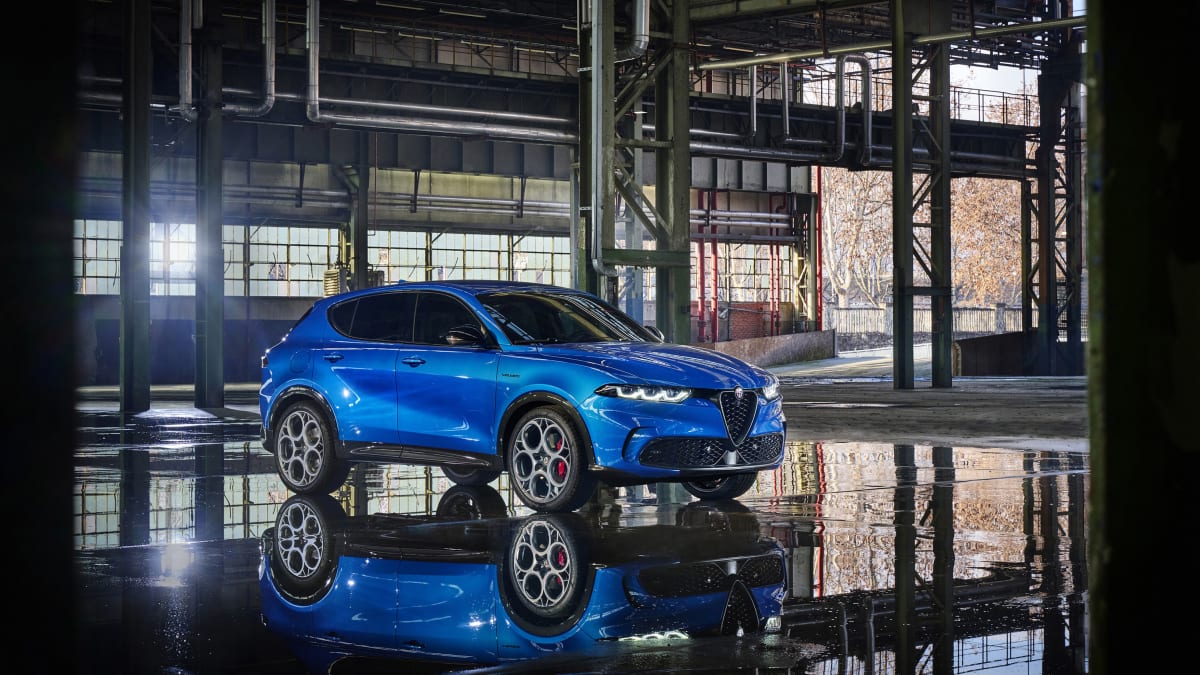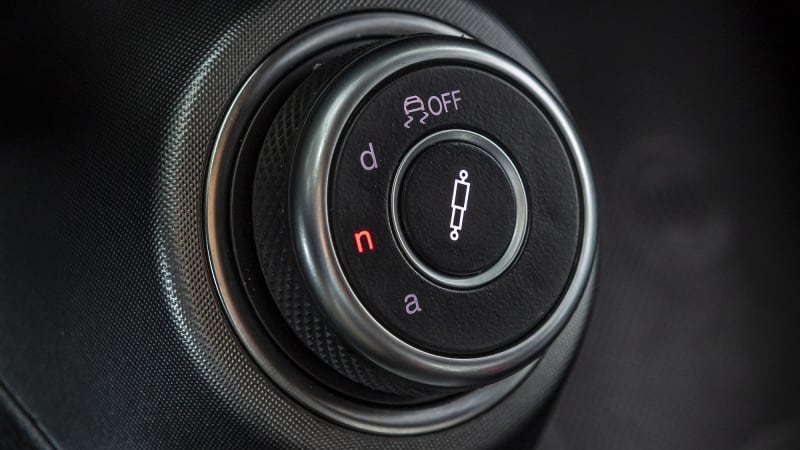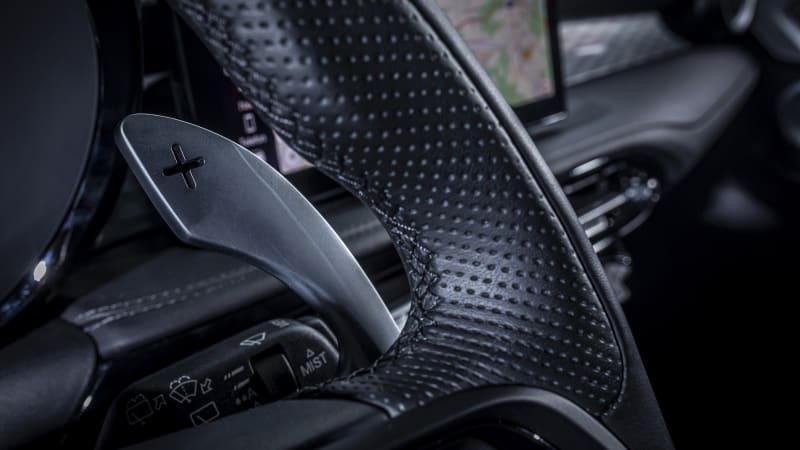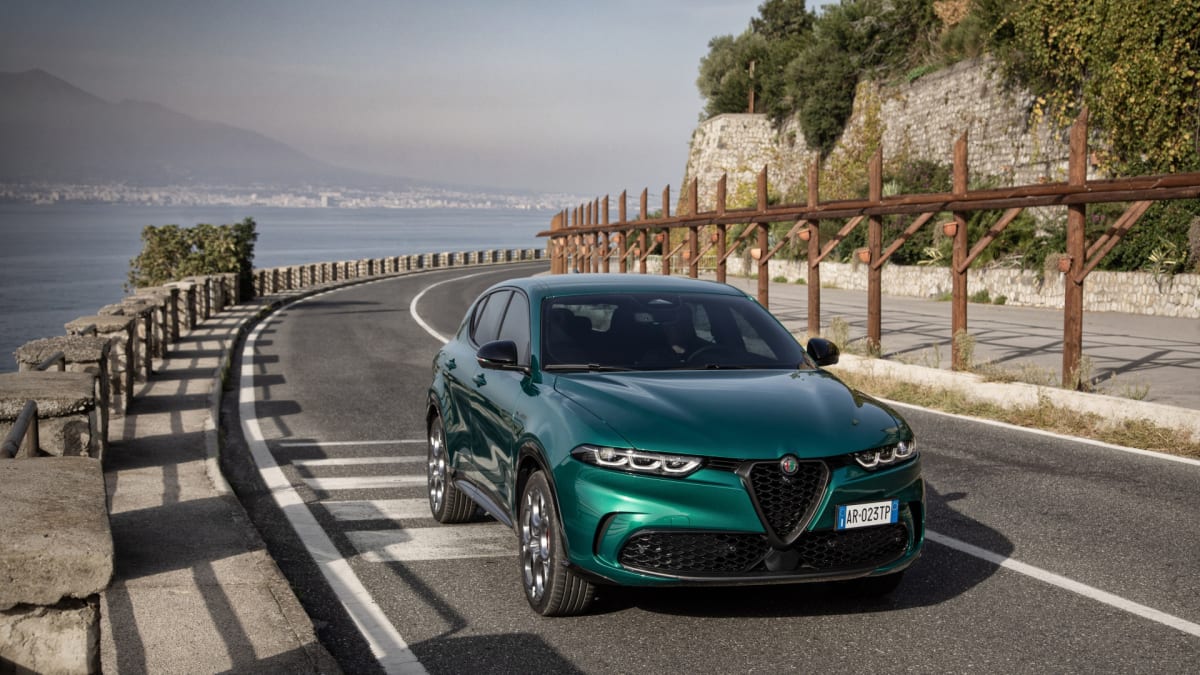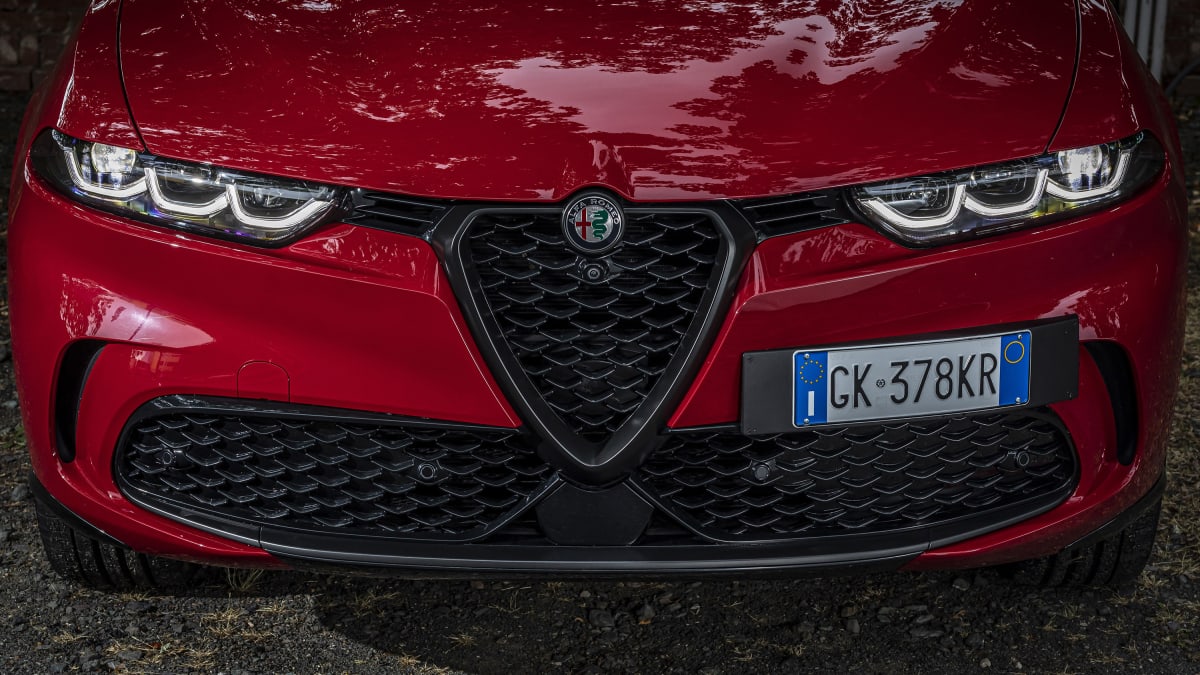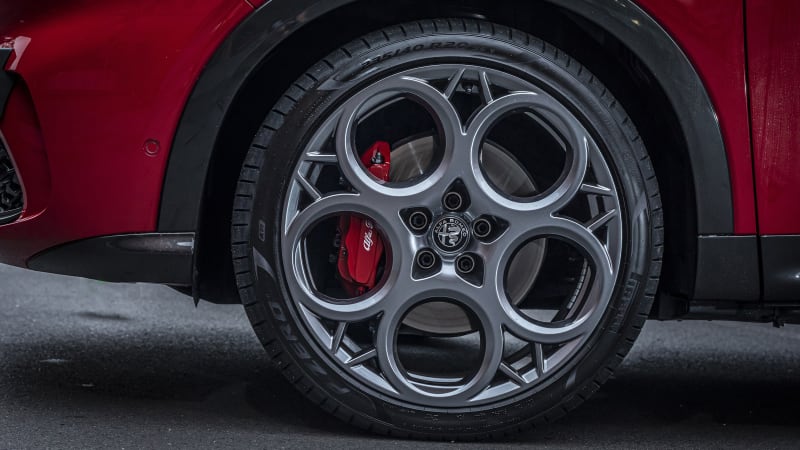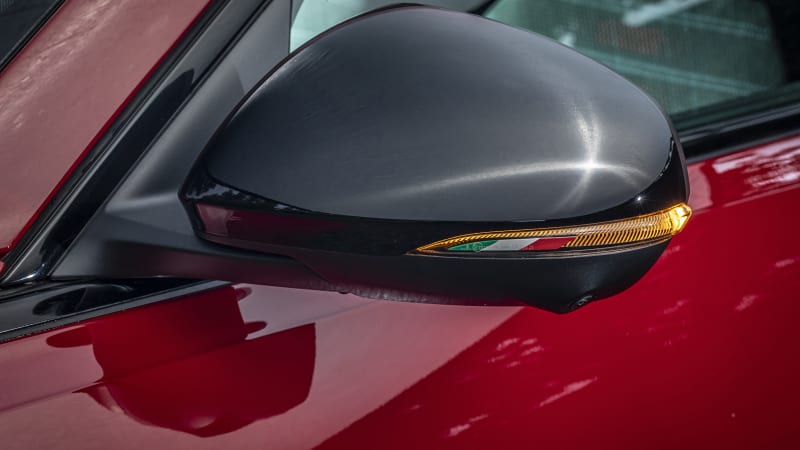MILAN, Italy – Chicken or egg? It’s often a matter of perspective. In this case, the 2023 Dodge Hornet is based on the 2024 Alfa Romeo Tonale – it’s even built in Italy – yet it was the Dodge that arrived first on American shores. By the narrowest of margins, true, but it happened nevertheless. That leaves the Tonale (pronounced “toe-nal-ay,” not “toe-nail”) to carve out a premium niche for itself above the buzzy Italian-American.
How? For starters, the Tonale is exclusively available as a plug-in hybrid in the United States. Only Canada and Mexico will get the lower-output, gasoline-only variant. Producing 285 horsepower and 347 pound-feet of torque combined, the plug-in powertrain consists of a 1.3-liter turbocharged four-banger and six-speed automatic transmission up front and a 121-horsepower electric motor on the rear axle. There’s no physical connection between them, so power from the gas engine can’t be sent rearward or vice versa.
That means the Tonale is effectively rear-wheel drive when in electric-only mode. It can run like that for more than 30 miles if the 15.5-kilowatt-hour battery is fully charged, which requires about 2.5 hours on a level 2 setup. Provided you don’t ask more of the powertrain than the battery and motor are able to deliver, it will putter along in combustion-free silence. Mashing the throttle will engage the gas engine no matter what hybrid mode you’re in; more on those below.
The standard Tonale is equipped with a MacPherson strut suspension with Frequency Selective Damping (FSD) shocks. They may sound like fancy electronic dampers but FSD shocks do their magic without any digital intervention. While not as sharp as performance-tuned shocks, nor as comfortable as those engineered to deliver the best ride, they offer a solid balance that is much less costly or complex than the adaptive setup that comes standard on the range-topping Veloce model.
The Veloce’s adaptive suspension is incorporated into Alfa’s “DNA” drive mode selection system, tightening up in “Dynamic” and backing off in “Natural” and “Advanced Efficiency.” The Tonale’s other sporty add-ons — aluminum steering column-mounted paddle shifters, aluminum pedals and red Brembo calipers with white Alfa Romeo script — are part of the “High Performance Driving Package,” which is optional on the mid-range Sprint and baked into the Veloce.
The hybrid modes mentioned earlier exist outside the D-N-A dial. In addition to the EV-only mode already described, there’s also an automatic “Hybrid” mode and two “e-Save” modes — one that maintains your existing state of charge and another that will actively replenish the battery as you drive, just in case you need EV-only mode available at or near your destination.
Although more closely related to the Hornet, the Tonale’s underpinnings date further back. They’re shared with the Jeep Compass among some other small SUVs in the Stellantis portfolio. Like the Audi Q3, BMW X1, Mercedes-Benz GLA/GLB and Lexus NX, the Tonale leans toward the baby luxury crossover segment. Alfa’s own Stelvio continues on as the flag bearer in the larger “compact” class, although isn’t available as a plug-in hybrid as only the Volvo XC60 and Audi Q5 are. Though Tonale’s footprint may be small, the PHEV powertrain makes it hefty — 4,133 pounds before options.
So far, so Hornet, right? But let’s not get too bogged down by that comparison. After all, Alfa and Dodge don’t directly compete, and the Tonale is aimed not at the Brotherhood of Muscle, but at the sisterhood of millennial affluence. North American SVP Larry Dominique was quite clear about this during our briefing: Alfa loves its enthusiast customers, but it can’t survive in the USA by catering only to people who look, well, like the average American auto journalist. Alfa wants women — young women — who care about style and exclusivity, not about the fact that the Tonale lacks a Quadrifoglio model. Don’t expect that to change, by the way. If it’s clover you want, look to Stelvio.
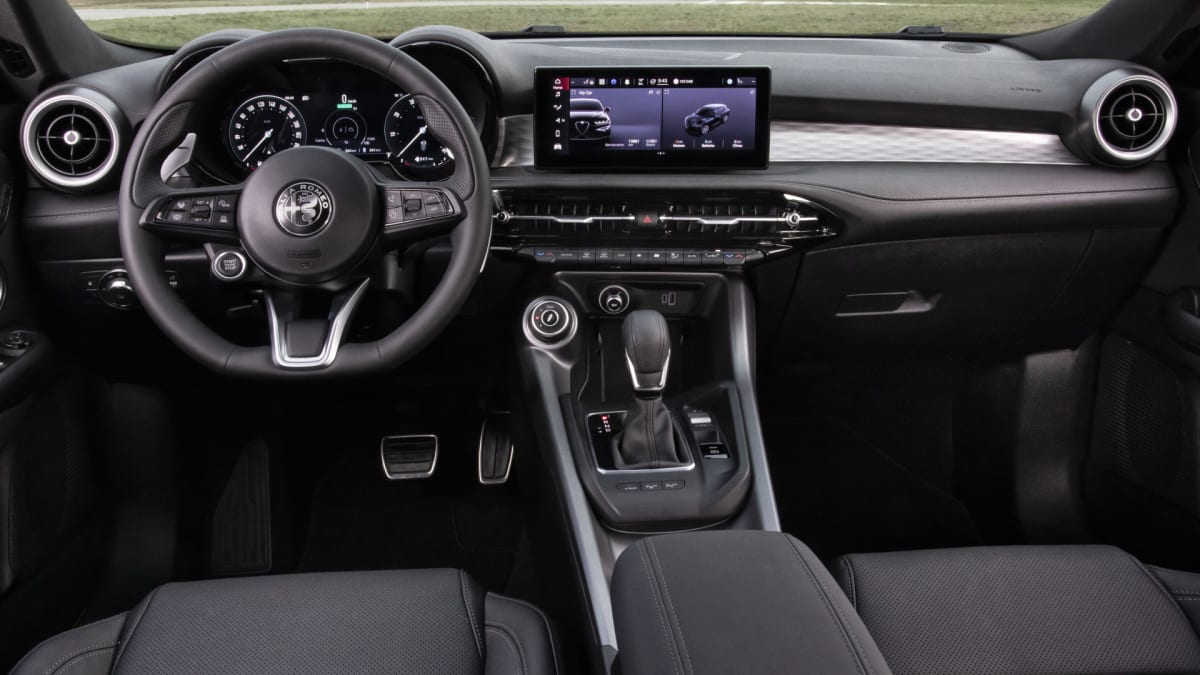
And even if Dodge beat Alfa to market, the Tonale came first in terms of development. That’s evident from the cabin, which looks every bit the part of an Alfa Romeo’s. The one exception, thankfully, is the 10.25-inch Uconnect 5 infotainment system, which is greatly superior to the Alfa-specific system you’ll find in the Stelvio and Giulia. It’s reskinned to Alfa’s design aesthetic, but its software bones are common with what you’d find in the Hornet and various Jeeps, Rams, etc. Sometimes there’s nothing wrong with pulling from a parts bin. It’s then paired with a 12.3-inch digital cluster display skinned to look like a vintage Alfa Romeo instrument panel. The seats are comfortable and supportive but lack the reassuring bolsters of the sporty buckets available in the Giulia.
Taken at face value, the Alfa’s cabin is plenty passable for a car that starts in the $45,000 range, eschewing both the finicky pretension of the Lincoln Corsair and the chunky futurism of the Lexus NX. Instead, the Tonale offers a lithe, sporty look that would be equally at home in a well-equipped Mazda – a good thing, to be clear. Like the Tonale, both the Lexus and Lincoln share their underpinnings with less-expensive corporate siblings — the Lexus building on Toyota’s RAV4 and the Lincoln on the Ford Escape. Of the three, the Alfa’s transformation is the least comprehensive, but that’s actually an indictment of just how little Dodge changed in its haste to fill the Charger- and Challenger-sized holes in dealerships with literally anything it could get its hands on. That’s OK; it looks just fine.
And it feels mighty fine, too. The Tonale’s powertrain leads the charge here (so to speak), coming off far more refined than either the Lexus or Lincoln. The little four-pot is pleasantly muted compared to the gasoline engines integrated with either competitor, and the Tonale feels more coherent for it. And it’s at this point that you can easily forgive its 2-ton curb weight; the plug-in Lincoln and Lexus are 265 and 340 pounds heavier, respectively. Between them, only the Lexus really pretends to be an enthusiast option, hence the F Sport package. In this instance, “F” is for “fine” at best; certainly not “fantastic.”
But while the NX 450h+ F Sport settles for competence, the Tonale reaches for engagement. And it gets there. We departed the Stellantis – Balocco Proving Ground about an hour west of Milan for the countryside, on the other side of which we were assured lay some proper driving roads. We weren’t disappointed. The freshly paved strings of asphalt lie on the landscape as if they were casually discarded by an overworked deity — fundamentally little different from where we sampled the Hornet in North Carolina, yet simultaneously alien and inviting. The comparatively permissive Italian speed limits were a nice little bonus.
Eager though it may be, the Tonale can’t defy physics. It will let you run afoul of them if you get a bit greedy, however. Grab the brakes hard for a sharp downhill corner and the rear end feels as though it’ll lift off the pavement, sending the stability control scrambling. Get it hooked around and aimed the way you want, and the process repeats itself as the rear squats and the front end scrabbles. The spirit is willing, certainly, but the body has its limitations. It required dedication to achieve those permissive speed limits between some of the tighter switchbacks, but the effort wasn’t tedious. This thing’s fun.
It should be noted, too, that while the Tonale will certainly pack the most punch with its battery fully juiced, there’s really no such thing as driving it around “fully depleted.” The hybrid system will always maintain some state of charge in the battery. Our romp through the mountains was performed on a “depleted” battery, and the Tonale suffered little for it. The pleasantly refined gas engine makes running the battery down to the ragged edge a lot more tolerable than in its competitors.
It’s on that strength above all others that the Tonale makes its case as a premium entry. It’s no brute; even the most aggressive setting in the adaptive system is perfectly cromulent for daily duties. But it’s not nearly as supple as the Lexus or Lincoln. The Alfa’s interior is certainly sportier and more youthful than either’s — the better to attract those similarly sporty and youthful buyers, right? But the Tonale’s boisterous character may not be to every luxury buyer’s liking, nor its materials strictly on par with its competitors’. But that’s not a new story, is it? Superficially, Alfa’s proposition is no more polarizing than BMW’s, for example; it’s just a matter of whose cultural je ne sais quois suits you better.
Either way, I can tell you this: If you’re among the 90% of Tonale shoppers who plan to lease, it’s quite a bargain. Normally, the Tonale Sprint starts at $44,590 (with destination); after the $7,500 federal electric vehicle credit is factored in, you’re looking at just $37,090. That’s cheaper than a loaded Jeep Compass. Heck, that’s lower than the average new-vehicle transaction price. But how does the Italian-built Alfa qualify? A loophole in the provisions of the Inflation Reduction Act allows businesses to take the EV tax credit under a commercial vehicle exemption. To make this work, the financing institution claims the credit and passes the discount on to the customer.
The Ti starts at $46,590 and the Veloce at $49,090, and both qualify for the same tax credit as long as you lease. Perhaps just as noteworthy, by opening up the PHEV powertrain to the entire trim lineup, the Tonale undercuts the Corsair and NX, not to mention the Q5 and XC60, by many thousands of dollars.
Plus, as you can probably guess from the narrow price spread, the Tonale comes pretty well-equipped. Heated front seats and steering wheel, wireless smartphone charging, all-digital instruments, integrated navigation, and a full driver-assistance suite are all standard despite often being optional in this segment The Ti and Veloce mostly amount to appearance and interior materials upgrades with extra options such as ventilated leather seats and premium sound.
The 2024 Alfa Romeo Tonale doesn’t break any ground in the electrification or small luxury SUV spaces; its existing competitors are testaments to that. But the availability of both another fun entry and another plug-in hybrid is both welcome and long overdue. With a competitive price and compelling package, Alfa isn’t asking us to go too far out on this particular limb. Let’s see who thinks this tree’s worth climbing.
Related Video


